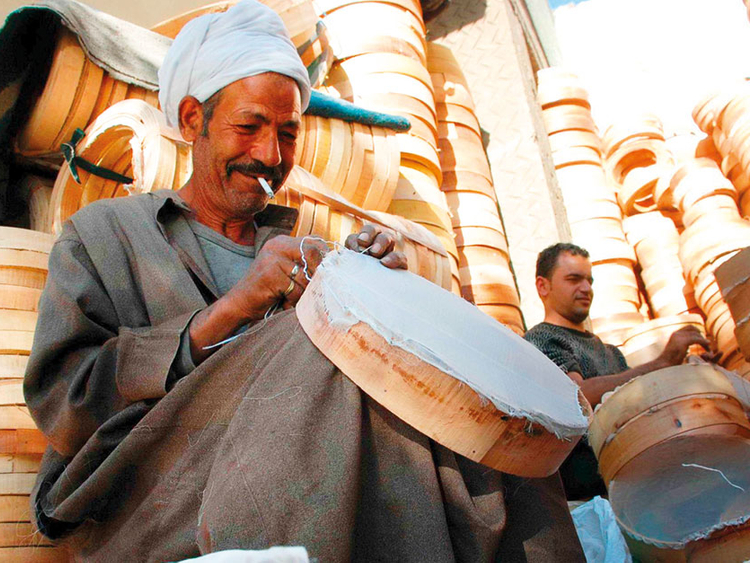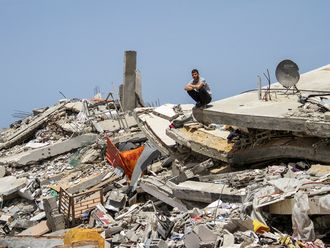
Cairo: His dwindling customers fondly call him “Amm Araby the clock” because he is always at in his sieve-making workshop by 9am.
This punctuality has been a trademark of the 67-year-old for about five decades, making him a well-known sieve-maker in the Old Cairo district of Al Sayeda Zeinab.
The sieve is a cylindrical wooden frame tightly attached to a woven thread net or metal mesh used to separate stuff like grains and flour from impurities.
Sizes of sieves and their holes depend on the types of particles to be separated. The trade is traced back to the time of Pharaohs.
“I have learnt this craft from my father, who inherited it from my grandfather,” said Araby, as he glances at various types of sieves stacked up inside his workshop.
“I have been in this trade for 50 years and have never failed to come here, except under difficult circumstances such as on the day of the Cairo fire,” he told Gulf News.
On January 26, 1952, a massive blaze swept through central Cairo, damaging many of its historic buildings amid political turmoil in then British-occupied Egypt. Those behind the suspected arson were never identified. Six months later, a group of young officers toppled the monarchy, and started a process of ending British colonialism in the country.
A father of three, Araby is famous for making sieves of different types and sizes. “In the past, there was no house in Egypt where a sieve could not be found. The small-hole sieve was used for sifting the flour, the rice or the salt,” he explained. “This sieve was an essential part of the trousseau for any newly married woman. But it is no longer in use because the flour, the rice and salt are now available in neat packets at stores.” Araby the last surviving sieve-maker in his district.
“Moreover, people in the countryside have stopped baking bread in their houses and now buy it, like the townsfolk, at bakeries. Times have changed a lot,” he added while tenderly stroking his pet cat.
Large-sized sieves have survived changes in Egyptian lifestyle, though.
“In recent years, I have mainly been making sieves with nets needed by shops selling leb [roasted edible seeds] and peanuts,” said Refai Hassan in his workshop in the Islamic Cairo quarter of Al Darb Al Ahmar.
“I also continue to manufacture metal sifters with large holes needed for separating coals from impurities. This type of coal is usually used at coffee shops serving the shisha [the water pipe] for smokers, and restaurants offering grilled meat,” the 58-year-old father of four said.
“This is a blessed craft that has helped me provide for my family and educate my children well. When they were still young, they used to assist me and accompany me to the market to sell our products. But now they have their other jobs as they do not want to continue making sieves.”
Very few young people are interested in launching a sieve-making career, according to Hassan, who started doing the job at the age of 10.
“Many youth are not satisfied with its small earnings and long hours of precision work,” he added.
“They want to make as much money as possible in no time. Therefore, many people have left exhausting crafts like mine for more lucrative jobs, such as driving the tuk-tuk,” he added, referring to the motorised three-wheel rickshaw, which is a popular mode of transportation in Egypt.
Against all the odds, Hassan pledges to keep the job for the rest of his life.
“This craft has been the source of my livelihood for long. It has given me a lot for my handiwork. I like it very much. But I’m afraid that sieve-making will not live long amid all the changes,” he said.













